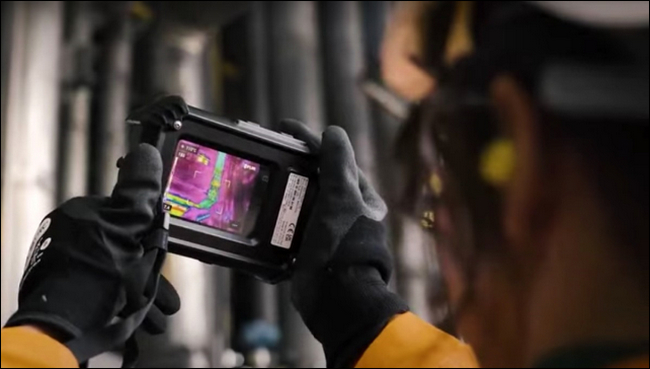The world of hazardous manufacturing and production can be complicated enough without adding extra elements to your workload. Hot work permits are often seen as being an essential part of working in hazardous environments - but what if you could inspect without this having to provide copious amounts of paperwork??
A multinational chemical manufacturing company has recently begun to do just that; freeing up time and labor to redeploy throughout its workforce.
Typically, inspecting in Zone 2 hazardous environments requires getting a hot work permit signed off by a manager. This can consist of extensive manual paperwork and requires that work ceases for at least one hour prior to inspection. It also requires that all potentially explosive materials (such as combustible dust and gases) are carefully measured and monitored to reduce the possibility of ignition.
To inspect key components of machinery in these challenging environments, thermal cameras are often used to identify hotspots, gauge the temperatures of machinery and check that parts such as valves are operating within expected parameters. Unfortunately, these cameras pose an indirect risk to the safety of the facility themselves because they are not intrinsically safe by design - which is why hot work permits must be approved prior to use.

Safer inspection - with the FLIR Cx5
The FLIR Cx5 is a thermal camera specifically designed to provide safer inspections in hazardous locations. The rugged housing which encases the lithium-ion powered thermal camera ensures high-performance thermography without the inherent risk associated with non-intrinsically safe products.
Whether in hazardous locations dealing with gas, vapor, dust or (in this case) combustible chemicals, it entirely eliminates the need for hot-work permits.
On site at this chemical plant, it allows operators to safely inspect areas that deal with extreme heat, such as the refractory which runs at 1400°C at its core. Operators can clearly see the external temperature of the brick-lined vessel and check to ensure it’s working within guidelines. The FLIR Cx5 is also used in this facility to monitor rotor pumps, the temperature of bearings and the level of liquid inside vessels.
Hours of time, freed up to better serve your facility
A spokesperson for the facility explains: “Use of hazardous area certified equipment is always preferable as the source of ignition is removed and a hot work permit is not required.
“Generating a hot work permit is labor-intensive as a request must be made, the permit to work prepared and all applicable areas confirmed free of flammable gases (and, of course, this only confirms that flammable gases are not present at that point in time). All-in-all, we’re probably looking at 3 hours’ work for each individual inspection - which the Cx5 eliminates - and means we can better put it to use elsewhere.”
With a 3.5-inch touchscreen interface that is simple to use, and the 160 × 120 thermal resolution reveals the accurate temperature measurement of nearby targets between -20 and 400°C. Add the FLIR Cx5 to your toolbox and you’ll always be ready to investigate mechanical and electrical equipment around your production site - with no hot work permit in sight.
Discover how you can free up time and maximise productivity in your facility with the FLIR Cx5.
About Teledyne FLIR
Teledyne FLIR, a Teledyne Technologies company, is a world leader in intelligent sensing solutions for defense and industrial applications with approximately 4,000 employees worldwide. Founded in 1978, the company creates advanced technologies to help professionals make better, faster decisions that save lives and livelihoods. For more information, please visit www.teledyneflir.com or follow @flir.
